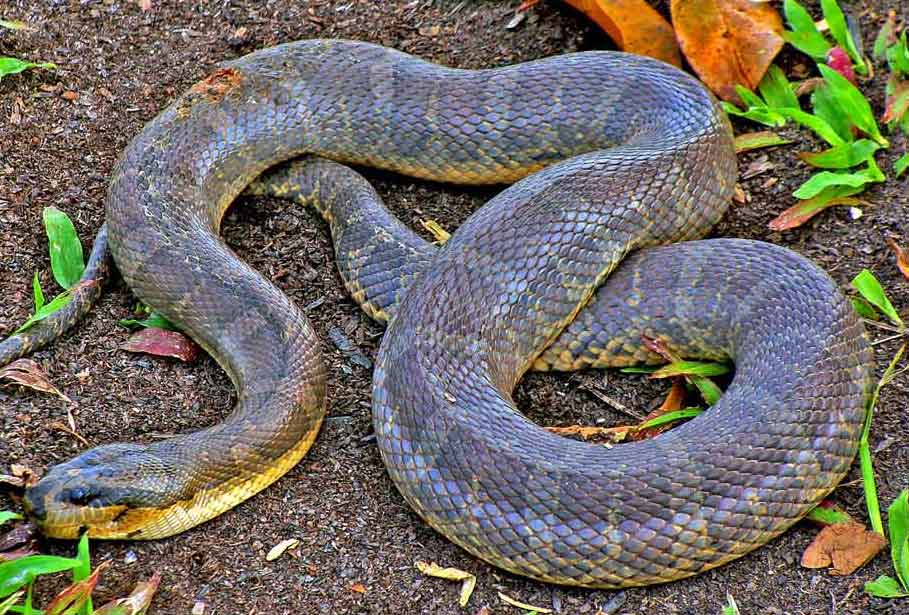
Content |
|---|
Origin / Distribution
The Puff-faced water snake (Homalopsis buccata) is distributed from India, Bangladesh and Myanmar to most of Southeast Asia, including Cambodia, Thailand, Malaysia and Singapore. In Indonesia it is present in Borneo, Sumatra and Java.
Characteristics / Appearance
The Puff-faced water snake is dark brown above, with narrow pale brown transverse bands with black edges, in young specimens of yellow color; pale head with a dark triangular or V-shaped mark on the muzzle, an A-shaped spot on the occiput and a dark band on each side that passes through the eye and extends to before the eye. The lower surface is white or yellowish, with dark brown spots along each side; the tail has brown spots. Head and body length 820 mm; tail 230 mm.
Habitat
The Puff-faced water snake inhabits freshwater bodies, like swamps, forest ponds and streams. Of nocturnal habits, feeds mainly on small fish or frogs.
Behavior
It feeds on small crustaceans, fish and amphibians, that it captures using its venom and its jaws, instead of constriction.
Threats to the species
State of conservation ⓘ |
||
|---|---|---|
 Minor Concern ⓘ
(UICN)ⓘ
Minor Concern ⓘ
(UICN)ⓘ
| ||
The Puff-faced water snake is piscivorous, so she is attracted to fish farms and, often, it is considered a pest.
This snake is frequently hunted for human consumption, for feeding farm crocodiles and leather goods. Millions of Homalopsis skins are exported to the United States and China each year.
No conservation measures are known for this species, although it is known to be present in several protected areas, including the National Park of U Mnh Thuong. Further research is needed to resolve the taxonomy of this group. It also, further research is needed on their abundance, trends and catch levels to ensure that a threat status is not triggered in the future. This species can be bred in captivity.
The "Puff-faced water snake" in captivity
Not suitable for neophytes more than anything due to the presence of medium strength venom. Caution is advised in its handling given the delicacy of the skin but, in general, its handling is quite easy.
The terrarium
Terrarium of 60 x 40 x 60 cm or even higher (it is also recommended 120 x 70 x 100 cm.), being aquatic arboreal, with a substrate of 5 cm of coconut fiber, moss and foliage that provides hiding places and greater absorption. Insertion of many plants and branches is recommended, to allow the creation of dark hiding places highly appreciated by this variety, allowing greater acclimatization and enrichment for the animal. Daily nebulizations should be abundant since these snakes love to drink both from a bowl of water and from the water deposited in the glasses or inside the terrarium..
It is a diurnal tree snake that loves to be in the low branches and in the water where it spends a lot of time..
Daytime temperature 26 – 27 °C; 23 – 24 °C at night; humidity 80/85%.
Buy one "Puff-faced water snake"
The price of a "Puff-faced water snake", in the exotic anomaly market, ranges between 100 – 150 EUR.
Videos "Puff-faced water snake"
|
|
|
|---|
Alternative names:
1. Puff-faced water snake, Masked water snake (English).
2. Homalopside joufflu (French).
3. Boa-Wassertrugnatter (German).
4. Homalopsis buccata (Portuguese).
5. "Serpiente acuática enmascarada", Serpiente de agua careta, Serpiente de agua de Borneo (español).
